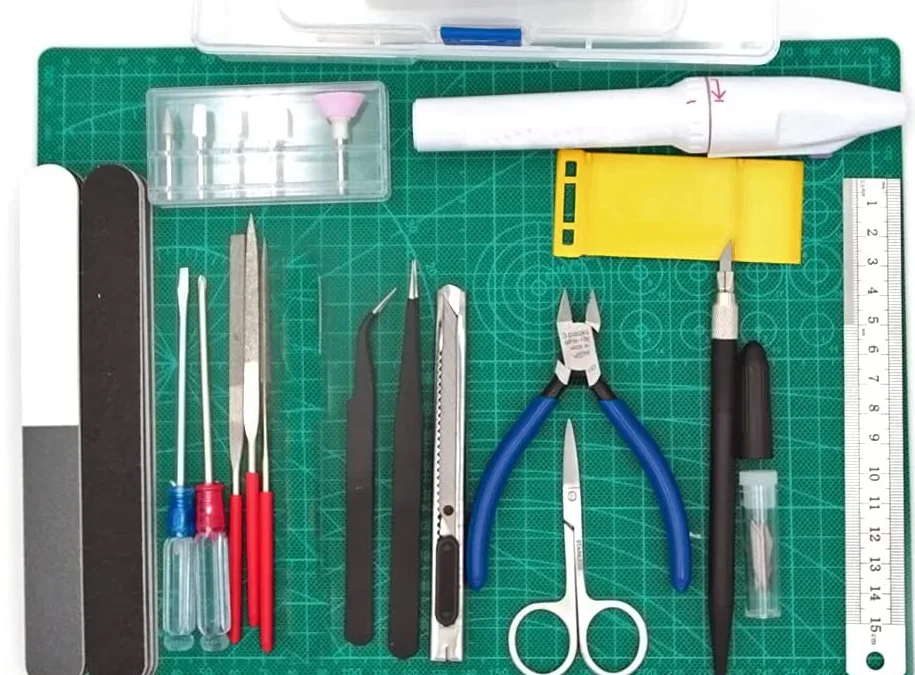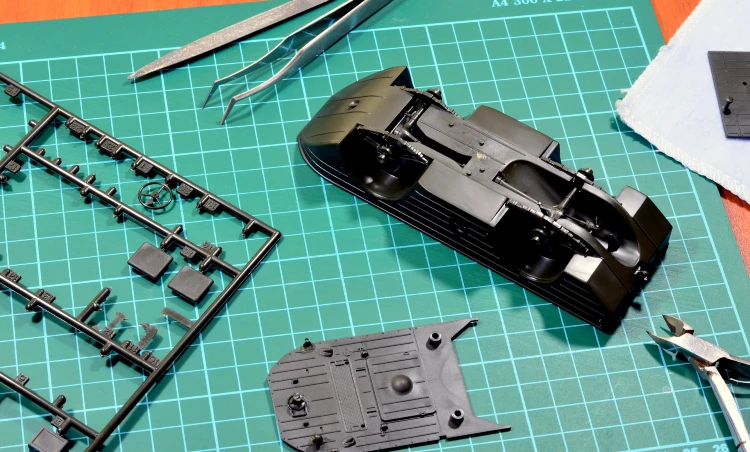
Most of what you need to start modeling will fit perfectly on a TV tray or small desktop – and maybe you already have it in your house, for example, a clothes hanger that serves as a paint holder for this scale 1 / 25 AMT / Ertl 1949 Mercury. Clockwise from the car: white glue (for transparent parts); super glue booster, super glue and (don’t forget!) super glue to remove glue; gardening scissors; grinding rods; small and large brushes; knife for a hobby; sorted sandpaper of different grades; tweezers for the smallest details; styrene cement tube; and putty to fill the seams.

Model building tools for beginners
Except for a well-ventilated room with a stationary flat surface, you do not need much to create a basic model kit; You can see the essentials in the picture above.
Speaking of ventilation, be it plastic grinding or paint spraying, an OSHA approved respiratory mask is recommended. Remember this rule: if you smell it, you breathe it.
Use a clipper to cut (not twist) the parts from the sprue (wooden parts). Using the side scissors, cut as close as possible to the part. Be careful: cut only unwanted plastic, unshaped parts or locating pins.

Clean the mold lines (remaining after the injection process) and any other irregularities on the parts before gluing them.
Pipe glue has its application, but liquid styrene cement is much more accurate and efficient. Carefully apply it with a thin brush: connect the two parts, load the brush with a minimum amount of cement and simply touch the seam. The capillary action will pull the cement out of the brush into the joint, where it melts and melts the plastic mating surfaces. Unlike the old-fashioned tube of glue, not a drop, not a thread – and this creates a strong bond between plastic parts. Even better, if you understand that you have not combined two things together, you can often add a little more liquid cement and separate the pieces.
Supply List
- White glue
- Super glue
- Super glue booster
- Super glue debonder
- Grinding sticks
- cutter
- Budget brushes
- Hobby knife
- tweezers
- Assorted sandpaper
- Model cement
- putty
- Paint set
- Insulation tape
- diluent
- Scissors
- Tweezers tweezers
- Toothpicks
- clothespins
- Rubber bands
- Spray paint
- Breathing mask

Plastic Model starter Tool Kit
By now, you probably have a good idea of what you would like to build. Of course, it is up to you. But here are some tips: do not complicate the first. Many kits are labeled “skill level” or the degree of difficulty indicated on the box. Or you can read the magazine FineScale Modeler in Workbench Reviews magazines, which almost always contain recommendations on the relevant experience needed to create this model.
In other words, make some training cuts before you deviate. There is nothing wrong with a simple, well-built model.
Most experienced stylists prefer airbrushing, but you can get good color with spray paint. Regardless of how you paint, wear a respiratory mask to protect against irritating and / or toxic fumes.
Leave a Reply